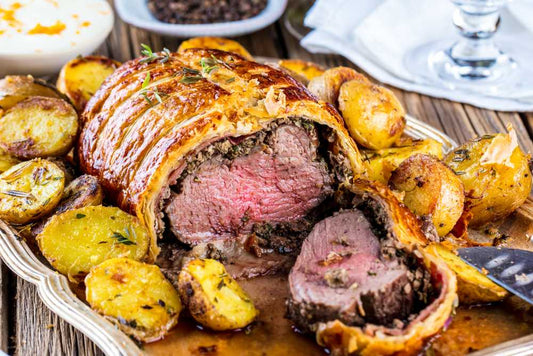Alfredo sauce, with its creamy texture and rich flavor profile, is a beloved addition to many dishes. Originally from Italy, this sauce has found its way into kitchens around the world, offering a luxurious touch to various meals. Whether you're a seasoned cook or just starting out, mastering the art of using Alfredo sauce can elevate your culinary repertoire. In this comprehensive guide, we explore the origins of Alfredo sauce, its key ingredients, variations, and most importantly, how to creatively incorporate it into different dishes.
Understanding Alfredo Sauce
Alfredo sauce, also known as "salsa Alfredo" in Italian cuisine, is a velvety white sauce traditionally made with butter, Parmesan cheese, and heavy cream. Its origins trace back to Rome, where it was popularized by restaurateur Alfredo di Lelio in the early 20th century. The sauce's simplicity lies in its few but essential ingredients, which come together to create a smooth and indulgent texture.
Key Ingredients of Alfredo Sauce:
- Butter: Provides a rich base and enhances the sauce's silkiness.
- Parmesan Cheese: Adds a salty and nutty flavor, crucial for authentic Alfredo sauce.
- Heavy Cream: Contributes to the sauce's creamy consistency and luxurious mouthfeel.
- Garlic: Often included for a subtle aromatic undertone.
- Salt and Pepper: To season and balance the flavors.
Variations of Alfredo Sauce
While the classic Alfredo sauce remains timeless, there are several variations that cater to different preferences and dietary needs:
- Lightened Alfredo: Substitute heavy cream with milk or half-and-half for a lighter version.
- Herbed Alfredo: Add fresh herbs like parsley or basil to infuse the sauce with vibrant flavors.
- Seafood Alfredo: Incorporate seafood such as shrimp or scallops for a decadent seafood twist.
- Chicken Alfredo: Combine with grilled or sautéed chicken for a hearty and protein-rich dish.
- Vegetable Alfredo: Mix in roasted or sautéed vegetables like broccoli or mushrooms for a vegetarian option.
- Spicy Alfredo: Infuse the sauce with red pepper flakes or chili powder for a spicy kick.
Pairing Alfredo Sauce with Different Dishes
-
Pasta Dishes:
-
Fettuccine Alfredo: The classic pairing where fettuccine noodles are coated generously with Alfredo sauce, topped with grated Parmesan and freshly cracked black pepper.
-
Chicken Alfredo Pasta: Sauté chicken until golden, then combine with cooked pasta and Alfredo sauce for a hearty meal.
-
Seafood Pasta: Toss shrimp or scallops with Alfredo sauce and pasta for an elegant seafood dish.
-
-
Vegetable Dishes:
- Alfredo Veggie Bake: Layer sliced vegetables like zucchini, bell peppers, and spinach with Alfredo sauce and bake until bubbly.
- Alfredo Stuffed Mushrooms: Fill mushroom caps with Alfredo sauce, breadcrumbs, and Parmesan cheese, then bake until golden.
-
Meat Dishes:
- Alfredo Chicken Bake: Top chicken breasts with Alfredo sauce, mozzarella cheese, and breadcrumbs, then bake until chicken is cooked through.
- Steak with Alfredo Sauce: Drizzle Alfredo sauce over grilled steak for a creamy and indulgent twist.
-
Pizza and Flatbreads:
- Alfredo Pizza: Use Alfredo sauce as the base instead of tomato sauce, then top with chicken, spinach, and mozzarella cheese.
- Flatbread with Alfredo: Spread Alfredo sauce on flatbread, add caramelized onions, bacon, and Gruyère cheese, then bake until cheese melts.
-
Side Dishes:
- Alfredo Mashed Potatoes: Mix Alfredo sauce into mashed potatoes for a creamy and flavorful side dish.
- Alfredo Garlic Bread: Spread Alfredo sauce on garlic bread and toast until golden and bubbly.
Enhancing Alfredo Sauce with Additional Ingredients
To further elevate Alfredo sauce, consider adding these ingredients:
- Fresh Herbs: Parsley, basil, or thyme can add freshness and complexity.
- Sun-Dried Tomatoes: Introduce a sweet and tangy contrast.
- Pancetta or Bacon: Enhance richness and add a savory depth.
- White Wine: Deglaze the pan with white wine before adding Alfredo sauce for a nuanced flavor.
- Nutmeg: A pinch of nutmeg can enhance the sauce's aroma and depth.
Tips for Cooking with Alfredo Sauce
-
Cook Over Low Heat: Avoid boiling Alfredo sauce, as it can cause the sauce to separate. Instead, cook it gently over low heat until heated through.
-
Stir Constantly: Stir the sauce frequently to prevent it from sticking to the pan and ensure even heating.
-
Adjust Consistency: If the sauce becomes too thick, thin it out with a splash of milk or chicken broth.
Conclusion
Alfredo sauce is a versatile ingredient that can transform ordinary dishes into extraordinary culinary experiences. Whether you're preparing a comforting pasta dinner, experimenting with new pizza toppings, or seeking creative ways to enhance vegetable dishes, Alfredo sauce provides endless possibilities. By understanding its origins, mastering its preparation, and exploring various pairings and enhancements, you can confidently incorporate Alfredo sauce into your cooking repertoire, delighting family and friends with rich, creamy flavors that never fail to impress.


